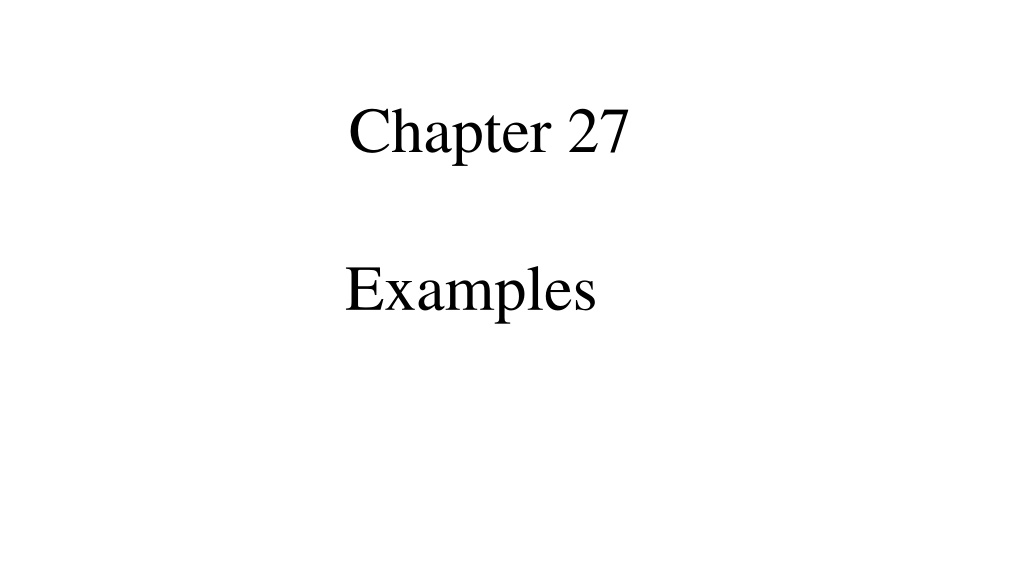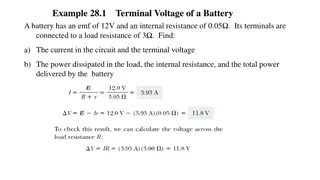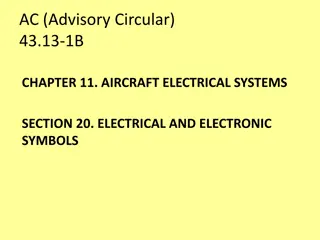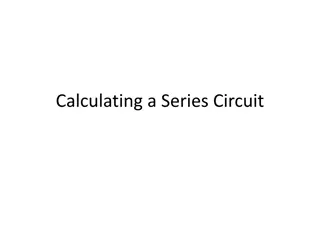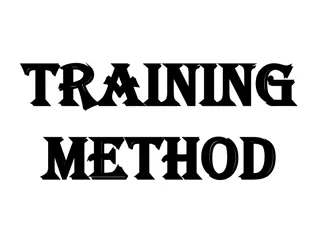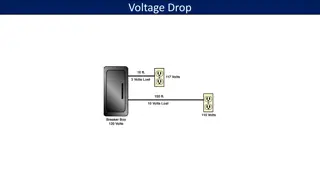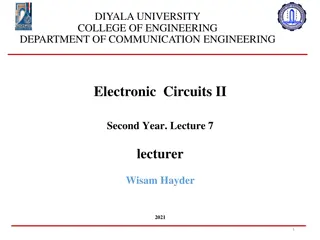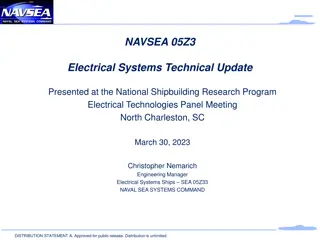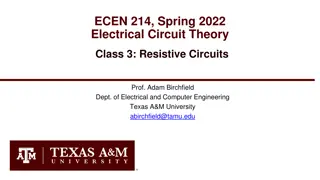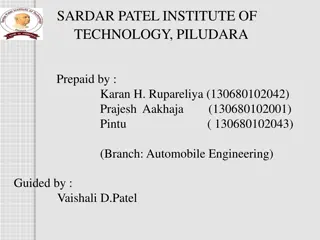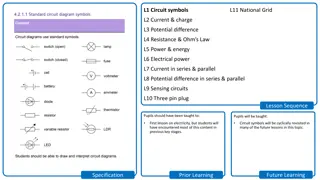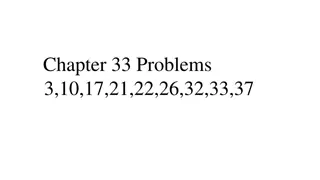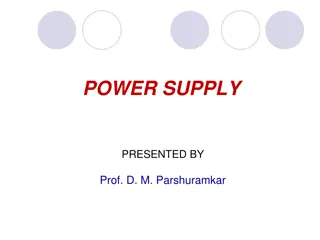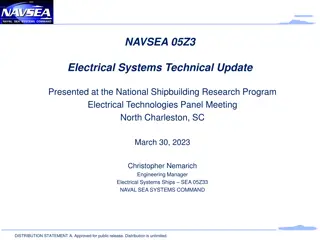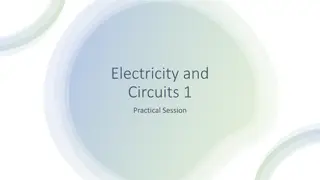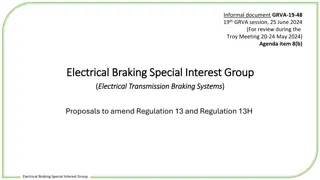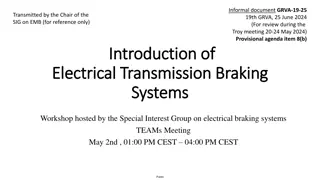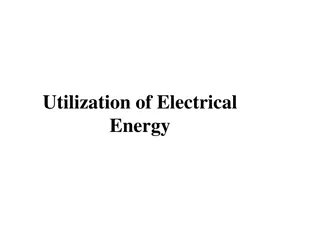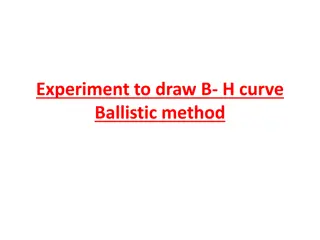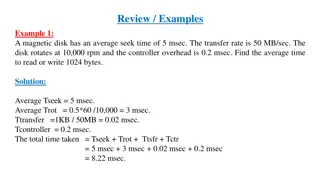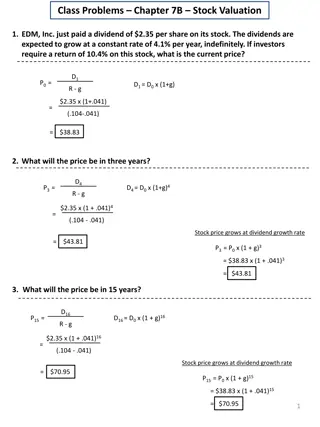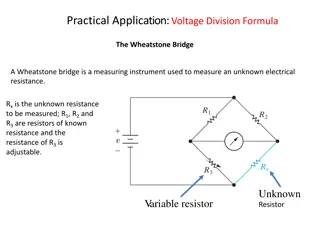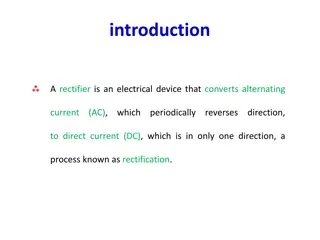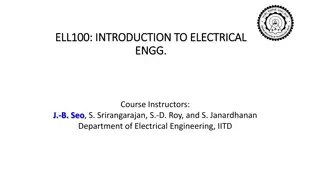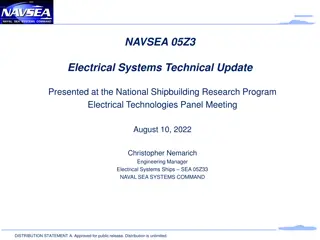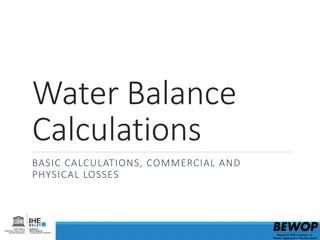Electrical Circuit Examples and Calculations
Explore various examples and calculations related to electrical circuits, including determining drift speed of electrons in a copper wire, calculating resistance of different materials, finding current in wires, and understanding temperature measurement with resistance thermometers. Dive into practical scenarios like electric heaters and learn the application of formulas to solve these problems. Enhance your understanding of electrical principles through these clear and detailed examples.
Download Presentation

Please find below an Image/Link to download the presentation.
The content on the website is provided AS IS for your information and personal use only. It may not be sold, licensed, or shared on other websites without obtaining consent from the author. Download presentation by click this link. If you encounter any issues during the download, it is possible that the publisher has removed the file from their server.
E N D
Presentation Transcript
Chapter 27 Examples
Ex. 1. A copper wire in a typical residential building has a cross-sectional area of 3.31x 106 m2. If it carries a current of 10.0 A, what is the drift speed of the electrons? Assume that each copper atom contributes one free electron to the current. The density of copper is 8.95 g/cm3. (Atomic mass of cupper is 63.5 g/mol. # Recall that 1 mol of any substance contains Avogadro s number of atoms (6.02x 1023). Knowing the density of copper 8.95 g/cm3, we can calculate the volume occupied by 63.5 g ( 1mol) of copper:
Vd= I / n q A 10 / (8.49 x 10 28 m-3 )(1.6 x 10 -19 C)(3.31 x 10 -6 m-2) = 2.22 x 10 -4 m/s
Ex. 2 Calculate the resistance of an aluminum cylinder that is 10.0 cm long and has a cross-sectional area of 2.0x 10-4 m2. Repeat the calculation for a cylinder of the same dimensions and made of glass having a resistivity of 3x1010
(Ex 3.a) Calculate the resistance per unit length of a 22-gauge Nickle Chrome wire, which has a radius of 0.321 mm. (Ex 3.b) If a potential difference of 10 V is maintained across a 1.0-m length of the Nickle Chrome wire, what is the current in the wire?
Ex. 6. A resistance thermometer, which measures temperature by measuring the change in resistance of a conductor, is made from platinum and has a resistance of 50.0 at 20.0 C. When immersed in a vessel containing melting indium, its resistance increases to 76.8 . Calculate the melting point of the indium. R = Ro[1 + (T - To)] = 3.92 x 10-3 C-1
Ex. 7 An electric heater is constructed by applying a potential difference of 120 V to a Ni-chrome wire that has a total resistance of 8.0 . Find the current carried by the wire and the power rating of the heater.
If we doubled the applied potential difference, the current would double but the power would quadruple because
Ex. 8 Estimate the cost of cooking a turkey for 4 h in an oven that operates continuously at 20.0 A and 240 V.
